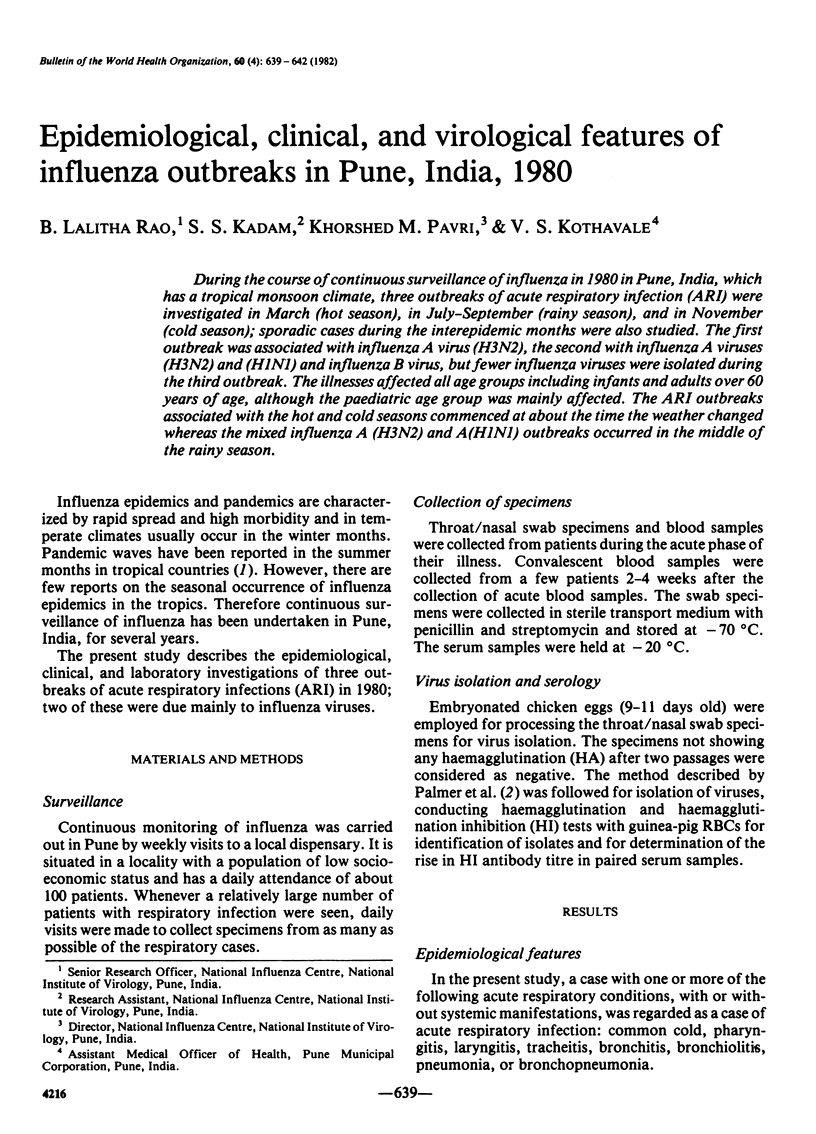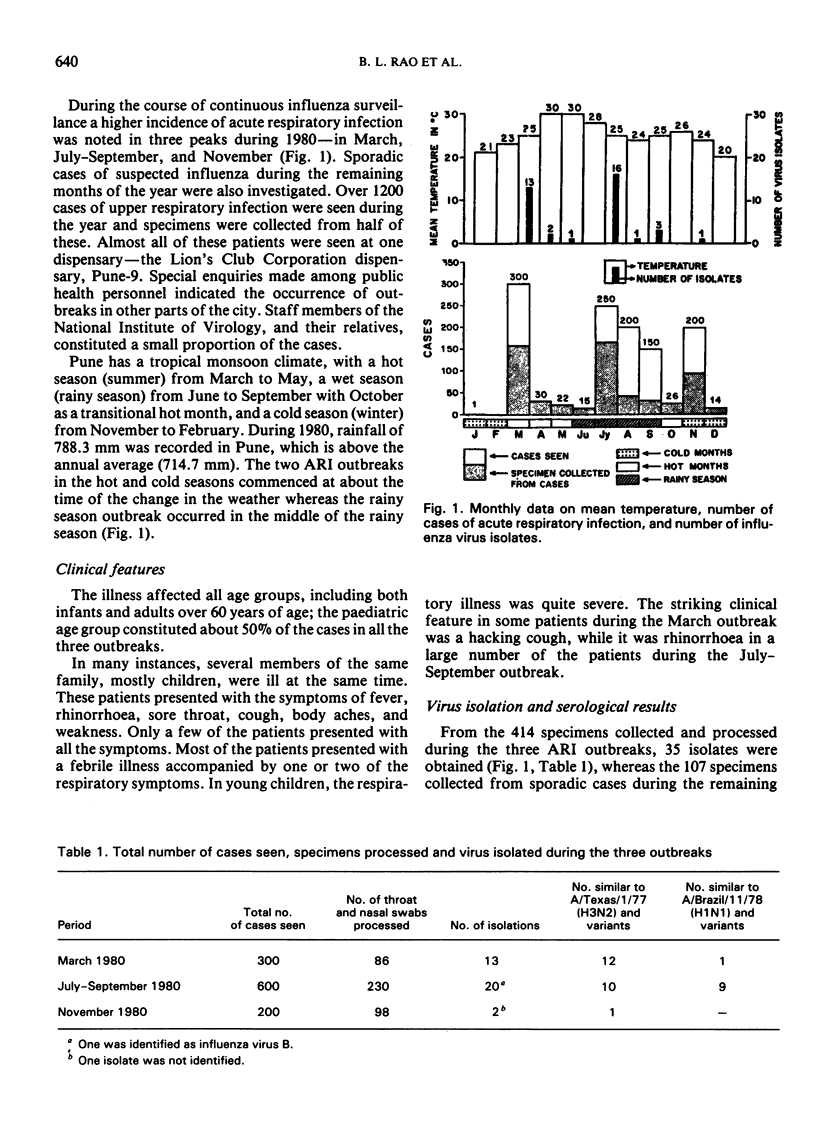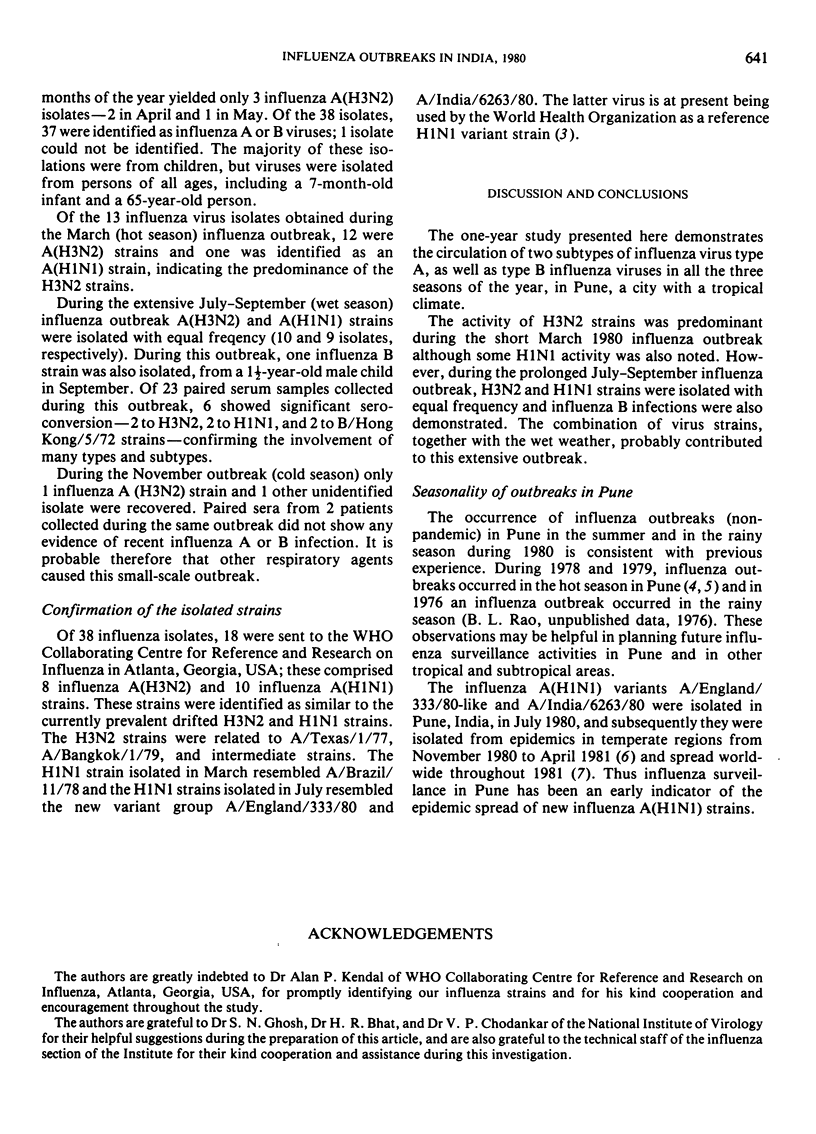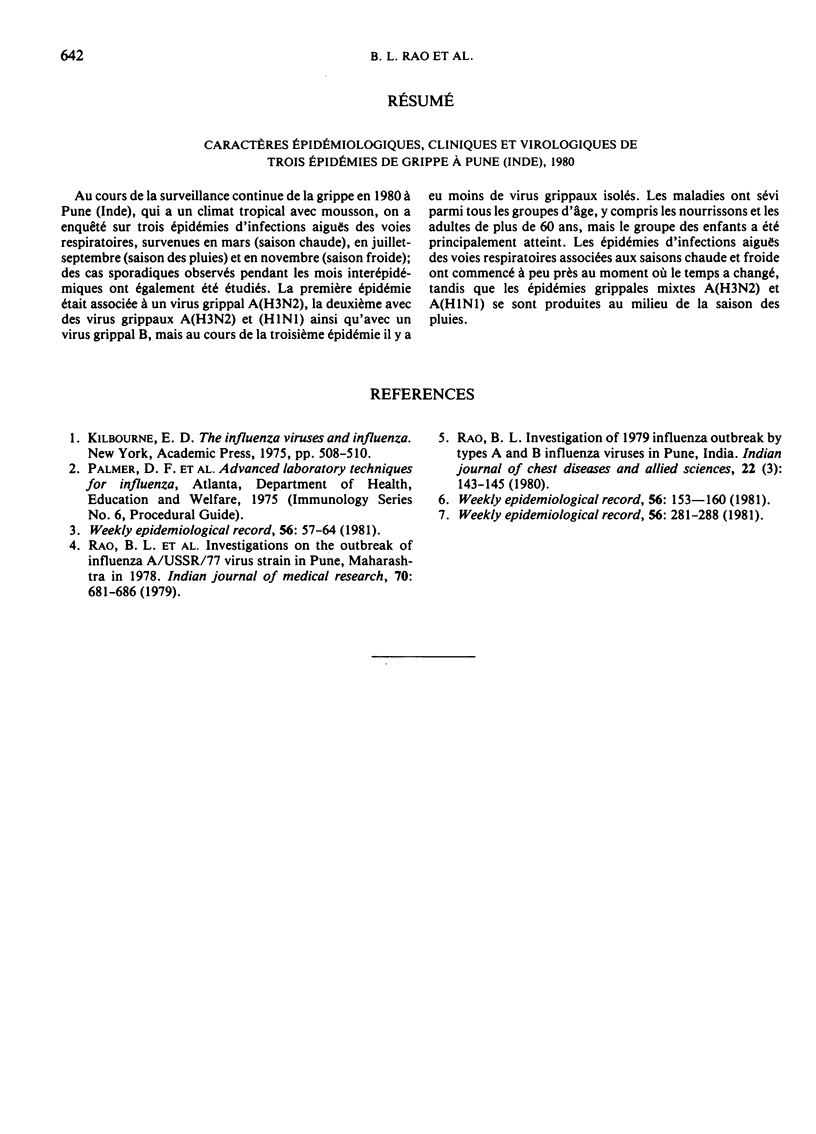Abstract
During the course of continuous surveillance of influenza in 1980 in Pune, India, which has a tropical monsoon climate, three outbreaks of acute respiratory infection (ARI) were investigated in March (hot season), in July—September (rainy season), and in November (cold season); sporadic cases during the interepidemic months were also studied. The first outbreak was associated with influenza A virus (H3N2), the second with influenza A viruses (H3N2) and (H1N1) and influenza B virus, but fewer influenza viruses were isolated during the third outbreak. The illnesses affected all age groups including infants and adults over 60 years of age, although the paediatric age group was mainly affected. The ARI outbreaks associated with the hot and cold seasons commenced at about the time the weather changed whereas the mixed influenza A (H3N2) and A(H1N1) outbreaks occurred in the middle of the rainy season.
Full text
PDF



Selected References
These references are in PubMed. This may not be the complete list of references from this article.
- Rao B. L., Gupta N. P., Rao C. V., Gogate S. S., Shah U. Investigation on the outbreak of influenza by A/USSR/77 virus strain in Pune, Maharashtra in 1978. Indian J Med Res. 1979 Nov;70:681–686. [PubMed] [Google Scholar]
- Rao B. L. Investigation of 1979 influenza outbreak caused by types A and B influenza viruses in Pune, India. Indian J Chest Dis Allied Sci. 1980 Jul-Sep;22(3):143–146. [PubMed] [Google Scholar]


